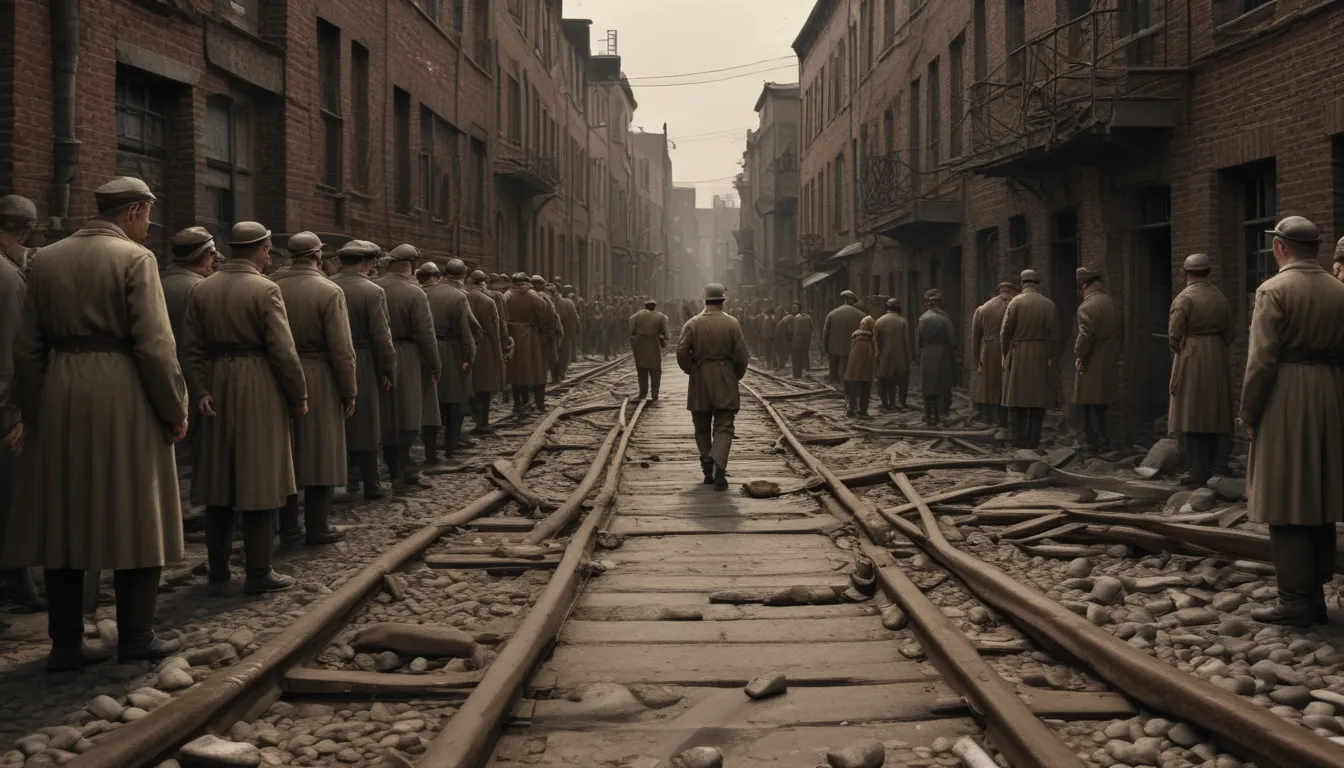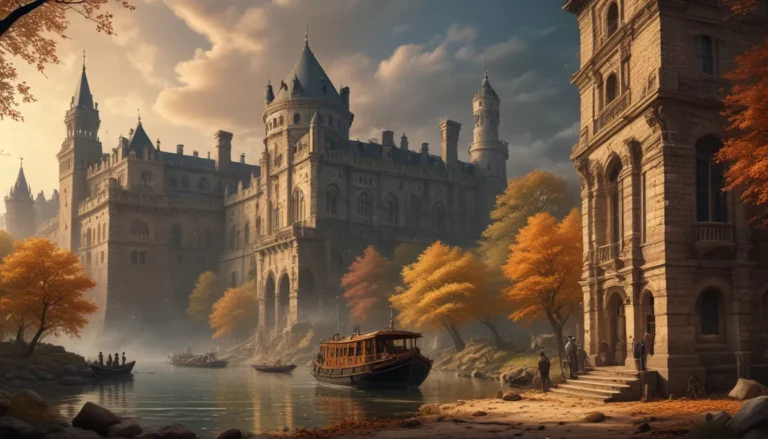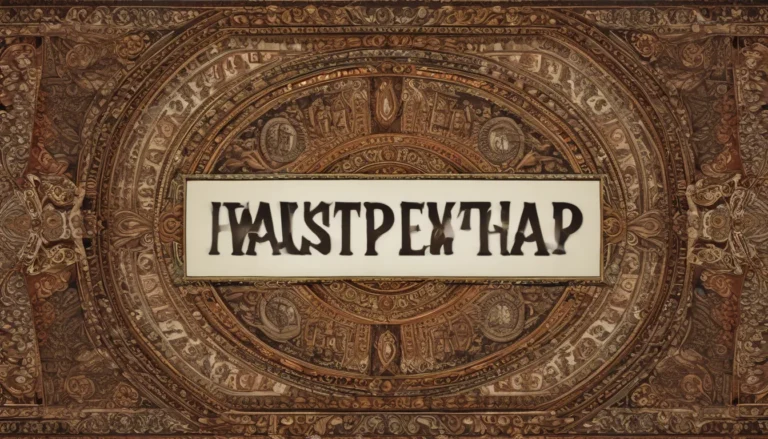The images in our articles may not match the content exactly. They are used to grab your attention, not to show the exact details in the text. The images complement the text but do not replace it.
Welcome to a detailed exploration of one of the darkest chapters in human history – the Holocaust. In this article, we will delve into the essential facts, interesting tidbits, and lesser-known details surrounding the genocide that shook the world during World War II. From the staggering death toll to the heroic acts of resistance, we will unravel the complexities of this tragic period and shed light on the lasting impact it has had on our collective memory.
The Devastating Toll of the Holocaust
The Nazis orchestrated the systematic killing of millions of Jews and other marginalized groups during the Holocaust, resulting in a staggering death toll of approximately 11 million individuals. Among the victims were about 6 million Jews, including 1 million children, who perished in the horrific genocide known as the Final Solution. Led by Adolf Hitler and executed by thousands of officers and soldiers, the atrocities committed during this period remain a chilling reminder of the depths of human depravity.
The Height of Horror: WWII and the Holocaust
The Holocaust reached its peak intensity during World War II, a conflict that raged from 1939 to 1945. Throughout the war, Jews and other targeted groups faced relentless persecution and violence at the hands of the Nazis. While the systematic genocide officially began in 1941, it wasn’t until 1945 that the concentration camps were liberated by the Allies, bringing an end to the horrors that had plagued Europe for years.
Acts of Defiance: The Jewish Resistance
Despite facing overwhelming odds, the Jewish community displayed remarkable resilience and courage throughout the Holocaust. From clandestine uprisings in ghettos and concentration camps to acts of sabotage and defiance, many individuals fought back against their oppressors. Names like Mordechaj Anielewicz, Dawid Apfelbaum, and Herbert Baum stand as symbols of the unwavering spirit of resistance that prevailed in the face of tyranny.
Seeking Justice: The Avenging Groups
Following the end of the war in 1945, some survivors felt compelled to seek revenge for the atrocities committed against their people. The Nokmim and Nakam groups, known as the Avengers and the Revenge, embarked on a mission to track down and execute Nazi war criminals across Europe. While the exact number of revenge killings remains unknown, these acts of retribution underscore the deep scars left by the Holocaust and the quest for justice in its aftermath.
Remembering Auschwitz: Symbol of Tragedy
Auschwitz stands as a haunting symbol of the Holocaust, a network of concentration and extermination camps where over 1.1 million prisoners perished, the majority of whom were Jewish. Operated by the German Schutzstaffel, Auschwitz became notorious for its role in executing the Final Solution and its brutal treatment of inmates. The camp’s commandant, Rudolf Höss, was among those convicted for war crimes and later executed for his role in the genocide.
Methodical Murder: Mass Shootings and Gas Chambers
The Nazis employed various methods to carry out their mass killings during the Holocaust, including mass shootings, gas chambers, and deadly medical experiments. Poisonous gas, notably Zyklon B, became a prevalent tool of extermination in the death camps, claiming countless lives in a cruel and inhumane manner. Many prisoners also perished during brutal death marches and grueling forced labor, adding to the staggering death toll of the genocide.
Sites of Suffering: The Network of Facilities
The Holocaust encompassed over 42,000 facilities scattered across Germany and occupied territories, serving as sites of repression, forced labor, and death. From ghettos to concentration camps, each location played a role in the systematic persecution and extermination of millions of individuals deemed undesirable by the Nazi regime. The sheer scale and scope of these facilities underscore the breadth of suffering inflicted during this dark period of history.
Roots of Repression: Preceding the Genocide
The Holocaust’s roots can be traced back to 1933, when Hitler’s regime first came to power and began enacting anti-Jewish policies. Laws such as the Nuremberg Laws stripped Jews of their rights and subjected them to escalating persecution, culminating in the violent pogrom of Kristallnacht in 1938. These early acts of repression foreshadowed the horrors that would later unfold in the form of mass extermination and genocide.
Trailblazer of Terror: Dachau Concentration Camp
Dachau, the first concentration camp established in Germany in 1933, served as a precursor to the larger atrocities of the Holocaust. Initially intended for political prisoners, Dachau later became a symbol of Nazi repression, housing individuals deemed inferior by the regime. The camp’s legacy of brutality and suffering foreshadowed the horrors that would unfold in the years to come across Europe.
Rejecting Refugees: A Global Failure
In the lead-up to World War II, many Jewish refugees sought to escape the escalating persecution in Germany, only to be met with closed borders and indifference from the international community. Countries like Australia, Canada, the United States, and Great Britain turned away Jewish refugees, leaving many to face the horrors of the Holocaust with nowhere to turn. This tragic chapter highlights the global failure to provide sanctuary to those in dire need.
Unveiling Truths: Fascinating Holocaust Facts
Despite the magnitude of the Holocaust’s atrocities, there are lesser-known facts that shed light on the complexities of this dark period in history:
- Hitler never visited a concentration camp, distancing himself from the atrocities he orchestrated.
- The infamous slogan “Arbeit macht frei” (“Work shall set you free”) adorned many concentration camps, masking the horrors within.
- Anne Frank, author of the renowned diary, perished in a concentration camp shortly before its liberation, leaving behind a legacy of courage and resilience.
- Women comprised a significant portion of Holocaust victims, facing unique challenges and suffering cruel fates at the hands of the Nazis.
- Many camp prisoners tragically died in the days following liberation, succumbing to illness, starvation, and exhaustion despite their newfound freedom.
Continuing Legacy: Remembrance and Reflection
As we reflect on the devastating legacy of the Holocaust, we must honor the memory of all those who perished and ensure that the lessons of history are never forgotten. The enduring impact of this tragic chapter serves as a stark reminder of the dangers of prejudice, hatred, and intolerance. Through education, remembrance, and reflection, we can strive to build a world where such atrocities are never repeated, and where the voices of the victims live on as a testament to the enduring power of humanity in the face of unspeakable evil.






